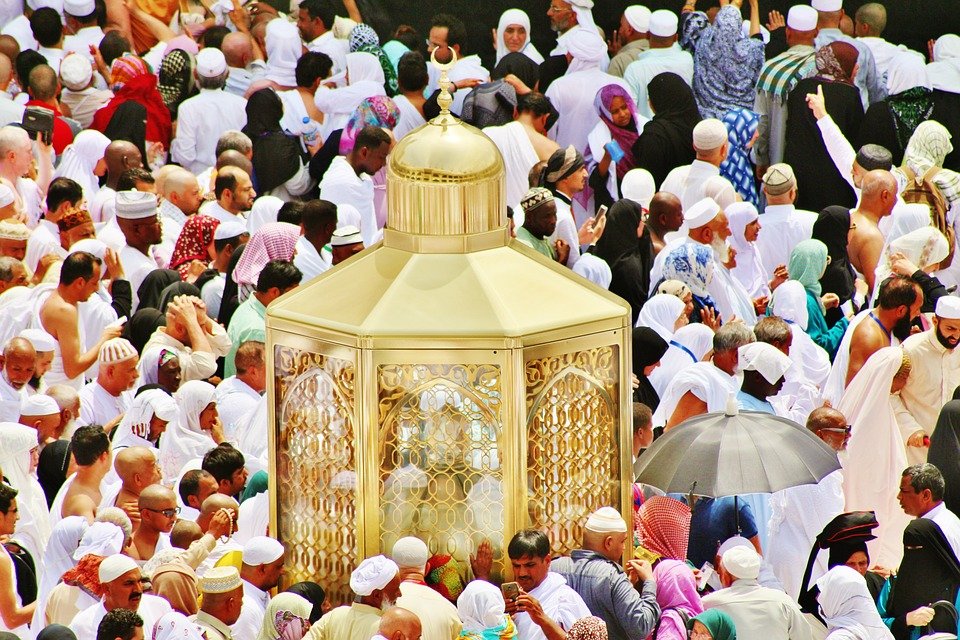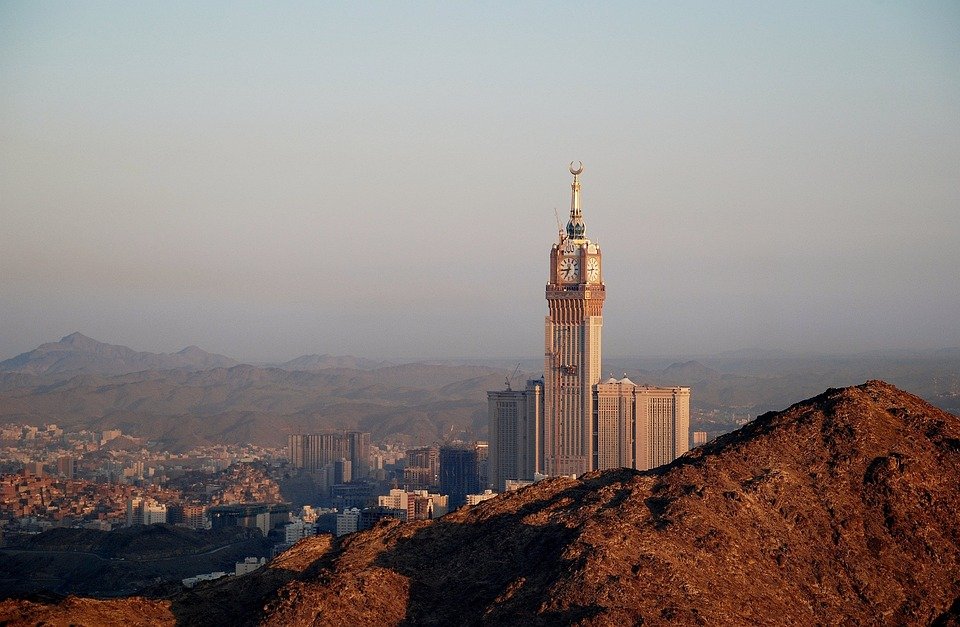You are here to read: When Does Hajj Finish? Key Dates and Insights Explained – A Thoughtfully Written Guide Offering Spiritual Wisdom and Travel Advice for Every Pilgrim who is going on holy journey of Hajj or Umrah.
When does Hajj finish? This important question is on the minds of many Muslims during the Hajj season. In this article, I promise to provide a clear and complete guide to help you understand when Hajj concludes and the rituals associated with its end. It can be somewhat confusing for first-time pilgrims or those unfamiliar with the details of this sacred event. So, stick with me as we break down the key elements surrounding when does Hajj finish and what it means for the millions participating each year.
I feel it’s essential to appreciate the significance of knowing when Hajj finishes. The timing holds deep spiritual value and reflects the successful completion of an important obligation in Islam. With over nine years of experience in the Umrah and Makkah, Madinah travel fields, our expertise shines through in this guide, “When Does Hajj Finish? Key Dates and Insights Explained.” I believe that having accurate information can enhance your experience and help you honor this crucial pilgrimage properly. Join us as we share insights and valuable details that will enrich your understanding of this remarkable event.
When Does Hajj Finish? Key Dates and Insights Explained
Understanding Hajj and Its Significance
Hajj is one of the most important events in Islam. Every year, millions of Muslims from around the world gather in Mecca, Saudi Arabia, to perform this sacred pilgrimage. This amazing event is filled with deep spirituality, tradition, and community. The Hajj connects people and reminds them of the values of humility, devotion, and justice.
The pilgrimage lasts for several days, but the rituals have deep meanings behind them. From standing in prayer at Arafat to tossing pebbles at the pillars, each action reflects a unique aspect of faith. It’s an opportunity for Muslims to renew their connection with Allah and seek forgiveness for past mistakes. Hajj symbolizes unity as people from all backgrounds come together with a single goal: to please God.
The Duration of Hajj
So, when does Hajj finish? Hajj occurs during the Islamic month of Dhu al-Hijjah. Specifically, it lasts from the 8th to the 13th day of this month. While the fundamental rituals happen in this span, many people also participate in other activities before and after Hajj, making it a longer experience for them.
On the 8th of Dhu al-Hijjah, pilgrims enter a state known as Ihram, wearing simple white garments. This state continues through the main rituals of Hajj. By the 13th of Dhu al-Hijjah, most pilgrims have completed their duties and can return to their daily lives. However, some choose to stay longer to continue worship or visit important religious sites in Mecca and Medina, adding even more meaning to their experience.
Key Rituals and Their Timelines
During the Hajj, several key rituals take place, each with its own significance. The experience begins with the Tawaf, which is the act of circling the Kaaba seven times. This marks the beginning of the pilgrimage and symbolizes devotion to Allah.
You're at the middle of this awesome post at AirlinkHajjandUmrah.com through: When Does Hajj Finish? Key Dates and Insights Explained. Keep reading, it gets better!
The next major event is the standing at Arafat, a critical point where pilgrims seek mercy and pray for forgiveness. This occurs on the 9th of Dhu al-Hijjah. After Arafat, the pilgrims head to Muzdalifah for an overnight gathering. The following day marks Eid al-Adha, when sacrifices are made, symbolizing obedience and faith, thereby bringing the pilgrimage closer to completion.
The Importance of Arafat Day
Arafat Day stands out as one of the most vital days of Hajj. This day falls on the 9th of Dhu al-Hijjah. Pilgrims stand on the plain of Arafat in prayers, seeking spiritual fulfillment and reflecting on their lives. The atmosphere is charged with emotion as people express gratitude, seek forgiveness, and ask for blessing.
The day is not just about individual prayers; it’s a chance for communal connection. Many feel an overwhelming sense of unity as they share the day with millions of others under the hot sun. The significance of Arafat Day cannot be overstated, as it is said that standing in prayer on this day can lead to profound spiritual transformations. As the sun sets, this day culminates with the return to Mina for the night, marking another step towards completing Hajj.
The Role of Eid al-Adha
Eid al-Adha follows shortly after Arafat Day, marking the completion of Hajj rituals for most pilgrims. This significant occasion celebrates divine mercy and obedience. When Eid al-Adha arrives on the 10th of Dhu al-Hijjah, pilgrims engage in a prayer service, followed by the ritual of animal sacrifice.
The sacrifices made during Eid symbolize the willingness to give and share. The meat is distributed among family, friends, and those in need, fostering a sense of community and kindness. Many pilgrims also find a deeper understanding of sacrifice through this act. This day further emphasizes that Hajj is not merely a set of ceremonies but a life-changing experience that deepens one’s faith in tangible ways.
Post-Hajj Rituals and Reflection
After the completion of Hajj, many pilgrims take part in additional rituals to solidify their experience. Most pilgrims return to Mina for a series of acts, which involve throwing stones at the pillars representing temptation. This act serves as a metaphor for resisting evil.
Following these rituals, pilgrims often engage in personal reflections about their journey. Many take this time to express gratitude for their spiritual renewal and seek to implement the lessons learned during Hajj in their everyday lives. This post-Hajj phase allows for further connection with local communities and encourages pilgrims to share their stories and experiences, thereby inspiring others.
The Everlasting Impact of Hajj
In conclusion, Hajj is much more than just a series of rituals; it leaves a lasting impact on every pilgrim. The key dates, rituals, and experiences create a unique blend of spirituality and unity. As the pilgrimage concludes on the 13th of Dhu al-Hijjah, countless lives are transformed, leading to new perspectives on faith, selflessness, and community.
The significance of Hajj isn’t confined to just those participating; it echoes throughout the global Muslim community. Whether seeking enlightenment, forgiveness, or even just a sense of belonging, the lessons of Hajj resonate long after the pilgrimage ends. For many, this incredible experience serves as a powerful reminder of who they are and what they can achieve through faith and unity.
That wraps up When Does Hajj Finish? Key Dates and Insights Explained. Thanks for sticking with us till here! Share this: When Does Hajj Finish? Key Dates and Insights Explained with your friends.
Check our homepage at Air Link Hajj & Umrah for more awesome updates.
Some interesting posts are: 1: Umrah Mubarak, 2: When is Umrah closed 2026?, 3: When does Umrah start after Hajj 2026?
Mushu, an experienced Saudi Arabia traveler and writer, shares insightful tips and spiritual reflections to enhance Hajj and Umrah journeys for fellow pilgrims. He has been to Makkah and Madina from 2016 to 2023 many times and his posts will reflect this.







